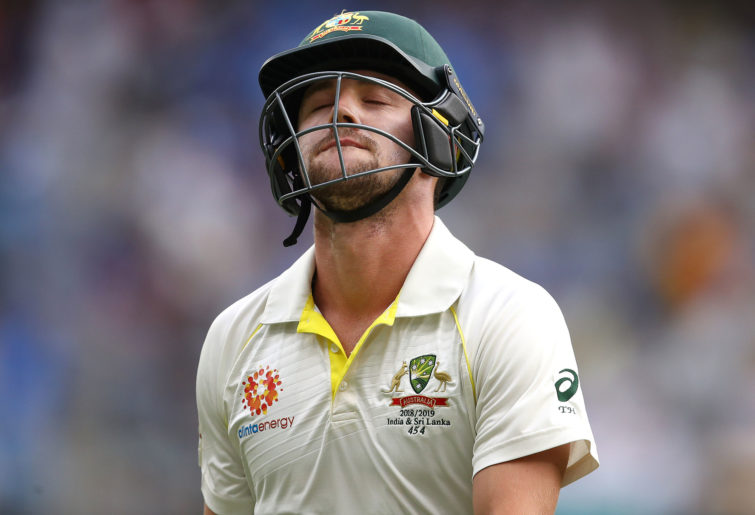Expert
Opinion
Each and every time the Australian men’s cricket team heads to India, images of the 1974 ‘Rumble in the Jungle’ come to mind, when Muhammad Ali took on the seemingly unbeatable George Foreman in what was then known as Zaire, now the Democratic Republic of the Congo.
That night, Ali dragged an aging body and mind, as well as a considerable reputation, into the ring against an undefeated man who had won 37 of his 47 fights by knockout. As cocky as ever, claiming that he had Foreman’s number and was “gonna dance” in the lead-up to the fight, Ali appeared to have met his match within minutes.
The former champion stood in his corner, face etched with sheer terror and intimidation at the completion of the opening round. Astounded by Foreman’s relentless power, Ali famously then settled, brushed off the onslaught and went on to rope the dopey WBC and WBA champion in one of the greatest sporting upsets in history.
Such is the monumental task about to be undertaken by a touring party of Australian cricketers looking to create history on the Subcontinent. For the national men’s team, conquering India will always be their Foreman.
While India lost Test series against Australia on home soil in 1956-57, 1959-60 and 1969-70, their emergence as a world cricketing power had already begun. By the time the 1979-80 series arrived, the kernels of the team that now intimidates the entire cricketing world when on tour had arrived, and they dusted up the Aussies 2-0 in a six-Test series.

(Photo by Quinn Rooney/Getty Images)
From that time on and despite mostly being no match for the Australians on the bouncy pitches that challenge their wristy approach Down Under, India at home has become something of a white whale for the Aussies.
Since and including that 1979-80 tour, the Australian cricket team has been sent abroad to take on the crafty spinners and resolute batting of the Indians on ten occasions. Eight times they have been beaten, by a collective total of 18 winning Tests to five. They’ve drawn the series on just one occasion and triumphed just once, with the most special of teams in 2004-05.
Both before and after that series – during which Adam Gilchrist and Ricky Ponting captained the tourists, Anil Kumble took 27 wickets and Damien Martyn was named man of the series with 444 runs – the Australians have been blunted, frustrated and ultimately left forlorn in India.
There have been clear chances – slightly opened doors for the Australians had they been good enough to enter and crash what is always a festive and raucous local party. However, India have nearly always had the answers, the antidote to the brash Aussies and, ultimately, the Border-Gavaskar Trophy at the end of the series on the Subcontinent.

(Photo by Ryan Pierse/Getty Images)
After an impressive summer during which the West Indies and South Africa were brushed aside with the mere waft of a cricketing hand, the Test ahead for Pat Cummins’s team cannot be understated. Few members of the squad have sustained success abroad, let alone in India, and the numbers read rather concerningly for a touring party looking to climb the toughest mountain in the game.
Statistically there is much about which to be concerned. Of the batsmen, just David Warner, Matthew Renshaw and Steve Smith take Test experience on the Subcontinent into the series. Warner has struggled with an average of 24.25 and Renshaw is a little better at 29.00, while Smith’s batting average of 60.00 against the might of India at home suggests just how important he will be should the Australians even dare to dream of victory.
Peter Handscomb would be a risky selection call despite solid domestic numbers, Travis Head will be forced to decide whether his attacking flair is capable of standing up to what will be a barrage of turn and control from the Indian spinners, and both Usman Khawaja and Marnus Labuschagne will make Test debuts on Indian soil.
In essence, just Smith is proven in the batting conditions, and the home side looks well stocked in that regard.
From a bowling perspective, Nathan Lyon is destined to bear much of the load, and though his 34-wicket return at 30.58 in Indian Tests may not be astonishing, his role will be crucial. Ashton Agar, Scott Boland, Cameron Green, Lance Morris, Todd Murphy and Mitchell Swepson would all be Test debutants in Indian conditions if selected, while Mitchell Starc’s seven wickets at 50.14 on the Subcontinent and Josh Hazlewood’s nine scalps at 32.77 highlight the importance of the slower bowlers being able to take wickets.
With just two Tests in India, the Cummins’s prolific return of eight wickets at 30.25 also reminds us of just how challenging and unrelenting the conditions will be.
Perhaps Murphy, Boland or Swepson will step up to fill what looks to be a bowling arsenal requiring far more than the blasting weapons that served the Aussies so well throughout the summer. Khawaja could well extend his rich vein of form onto new shores, and should Head and Labuschagne make stunning debuts in India, the Australians could well be in with a fighting chance.
The numbers and experience within the squad suggest this series may well be a bridge too far in terms of victory for the Australians, but they’ll fight in what could be a Test series for the ages.